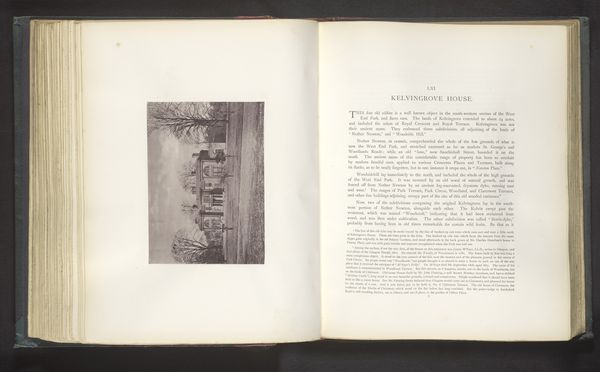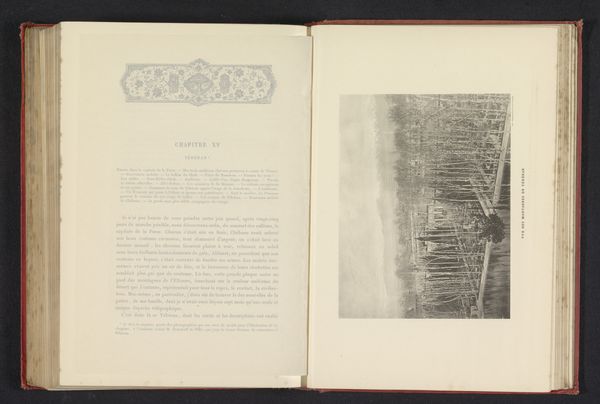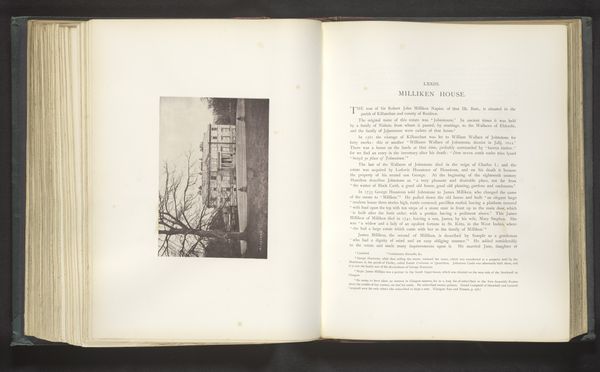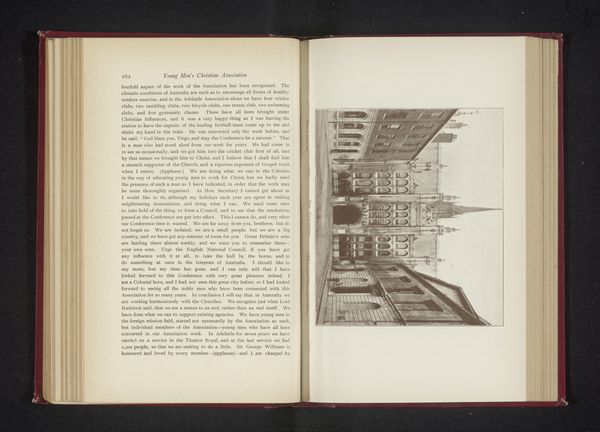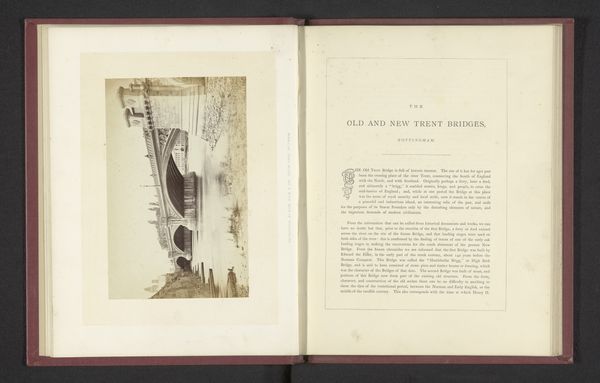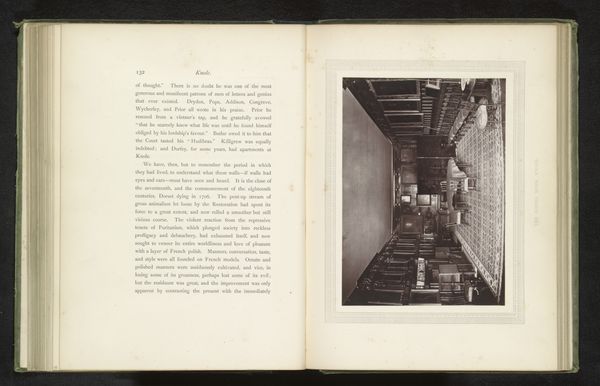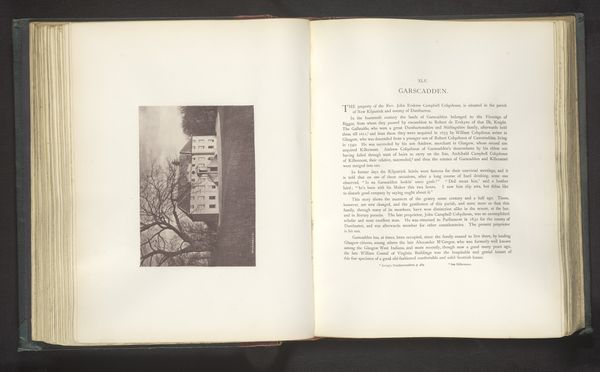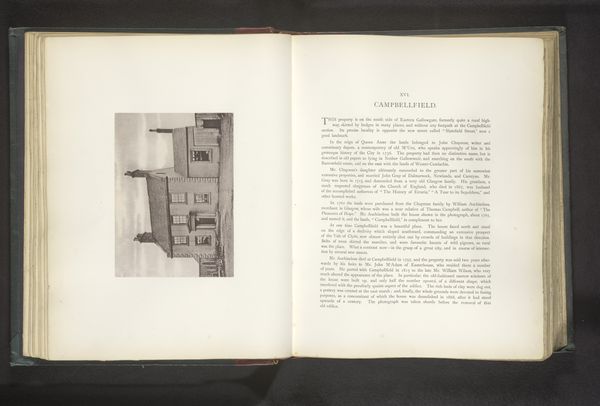
Presentatie van plantaardige producten uit Schotland op de Great Exhibition of the Works of Industry of All Nations in 1851 in het Crystal Palace in Londen 1851
0:00
0:00
print, paper, photography
# print
#
book
#
landscape
#
paper
#
photography
Dimensions: height 159 mm, width 205 mm
Copyright: Rijks Museum: Open Domain
Curator: Looking at this sepia print laid bare on an open book, I feel like I’ve uncovered an antique. It looks quite fragile. Editor: That’s an interesting impression. This is a photographic print from 1851, meticulously crafted by C.M. Ferrier and F. von Martens. The piece documents a rather grand display at the Great Exhibition held in London. It's titled "Presentatie van plantaardige producten uit Schotland op de Great Exhibition of the Works of Industry of All Nations in 1851 in het Crystal Palace in Londen". Curator: Such a lengthy title! Ignoring the botanical presentation implied, I'm immediately drawn to the structural elements captured. The light, crisscrossing steel almost abstracts the scene, but somehow monumentalizes industrial advancement through geometry and tone. Editor: Absolutely. The image exists as part of a broader social, economic, and cultural moment. This exhibition was a platform for empire, showcasing resources plundered across the world, cloaked in the guise of industry and progress. It makes me wonder about the human cost behind all that botanical abundance displayed at the exhibition. Curator: From a formal perspective, look how the artists balanced detail against the diffuse light. See how our gaze is cleverly redirected by the criss-cross design towards the photograph's implied vanishing point. We’re drawn into the scene. The choice of a print laid out across a bound book only strengthens this formal observation. The art becomes referential not to life but instead to art itself. Editor: And yet, its status as a reproduced image, positioned within a book about the exhibition, gives us reason to pause. What isn’t the picture telling us about laborers and colonial enterprise? The formal beauty, yes, but it's inseparable from the structures that made this abundance possible. Curator: Fair enough. Considering your point about the cultural framing, perhaps that formal redirection you were so intent on a moment ago served to intentionally sanitize, or conceal, what you felt were atrocities behind its creation. It seems that light can often distort what actually is, in order to achieve what it seems. Editor: Indeed. Thinking about its place within this book now only reinforces its purpose of celebrating the wealth, and eliding questions about its origins and future impacts. The past captured, neatly archived for prosperity. Curator: In conclusion, examining both formal design and context gives one much to ponder with Ferrier's and von Martens' study.
Comments
No comments
Be the first to comment and join the conversation on the ultimate creative platform.



